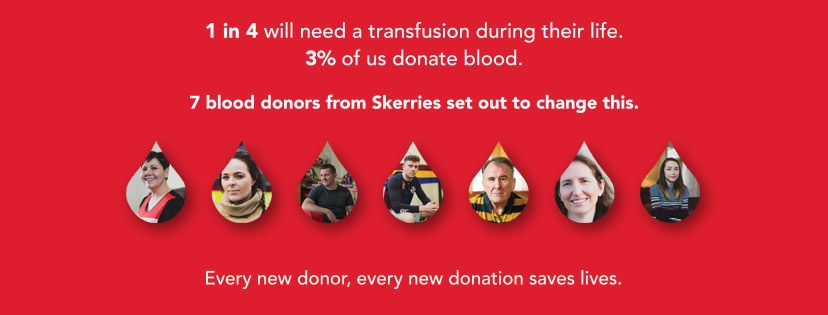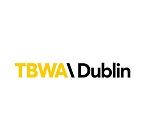
Digital Without the Department

As digital specialists fold and ad agencies take more and more responsibility for our clients’ digital and social brand activity, we are propelled to make fundamental changes within our own organisations. Gone are the days when digital and social were treated as add-ons or afterthoughts. In 2019 the only effective ideas spring from minds that think social and digital first. That’s an easy sentence to write – clichéd, even; turning it into a reality is hard, revolutionary and deeply rewarding.
We are particularly proud of the transformative digital and social campaigns we’ve created in the last year. Not just because of the work itself - cut-through, effective and shareable as it often was - but because in achieving these things, we also changed the way we worked as an agency.
Creating effective work with social and digital at its heart compels us to change everything, from the pace at which we think and create to the way we bill, and from the way we brief to the way we incentivise our teams.
Not only that, change of this significance challenges us to reconsider which companies we view as our competitors and our partners, how we measure success, and even the way we manage our mental health. Because – no matter how effectively we transform our companies technologically and methodologically – the ultimate weight of change rests on our individual people. We need to protect them, refresh them, support them and liberate them. In so many respects, to digitise an agency is to re-humanise an agency. To break the old machine, and create an environment with fewer obstacles and more room for our people to grow and to be their contemporary selves.
And when we do? It’s simple – we have more tricks and tools than ever with which we can crack client problems and unlock growth.
From using networking solutions to recruit donors for the Irish Blood Transfusion Service (IBTS), to delivering a robust digital framework for the Referendum Commission of Ireland; and from launching new deli products for Carroll’s of Tullamore to new lagers for Diageo, the transformative work we deliver begins not by asking, “can we do something cool?”, but “how can we turn up in people’s lives in a useful and surprising way?”

For example, Carroll’s of Tullamore asked us to help launch their new New York Deli Meats range. Based on budgets, their original brief suggested radio, but we were keen to explore the potential of how the brand could show up in a social and digital world. Carroll’s is a brand built on a bedrock of authenticity, and somehow handing them over to influencers didn’t seem sufficiently authentic.
So - and without opening the debate on the validity of influencer marketing as a channel - we created a micro-influencer campaign for Carroll’s.
Contrary to expectations, micro-influencers are not very small people who happen to be influential, they are everyday people doing everyday things in social channels with fewer than 1,000 followers. They are considered to be experts in their respective categories (in this case, food), and are seen to be relatable, genuine and trustworthy compared to better-known influencers who may be plugging the latest gym one minute, and the latest gin the next.
There are a number of reasons to choose micro-influencers, but the main reason is engagement: trust is a much more powerful tool than influencers or brand posting and as Nielsen and Facebook data (reported by influence.co via AdWeek, Feb 15 2017) suggests, engagement levels at over 75,000 followers are around the 2.4% mark, for 1,001 – 9,999 followers is 7.5% and for fewer than 1,000 followers is 15%.
So, we recruited 62 micro-influencers with 350,000 combined followers who posted pictures & videos of their sandwiches made with the new Carroll’s product; it generated tens of thousands of likes and broke the brand’s sales targets way ahead of schedule.
By turning up in people’s lives in a useful and surprising way.
Besides being true to the brand, success lies in being true to your brand’s audience. For the Christmas holidays, we were charged with helping Rockshore - Diageo’s new Irish lager - continue its successful launch period. We already had a successful foundation in social channels, but asked ourselves, how could this brand show up in a digital world and ‘own’ Christmas?
This time, rather than using social media as a broadcast medium, we looked at the behaviour of Rockshore’s audience on social and messaging channels and saw that we needed something for their fingertips and not just their eyeballs. They’re heavily engaged in visual communications; so we created the ‘GIFMAS’ concept as a way of amplifying our audience’s social behaviour. Our shareable creative augmented their regular conversations in social and messaging channels rather than distracting from it. It was an unprecedented success for a European brand on Giphy, with around six million views and counting.

In both of these examples, our work understood how these brands needed to show up in a social and digital world, and in both cases, our work was transformative for the brand, the business and the agency.
Those are the business and creative stories, but what are the structural stories to be told?
We all know that social and digital is changing the way we work, but the numbers are staggering.
Last year Michael Farmer, author of Madison Avenue Manslaughter, noted that in 1992, the average advertising agency produced 385 pieces of work in a year. (For example, a campaign with a TV spot, a radio ad and a poster would count as three of those pieces of work.) Largely because of digital and social touchpoints, by 2018 that number had risen to 14,750.
I’m pretty certain that like every other advertising agency, BBDO Dublin’s output last year wouldn’t be far short of that number. The difference is, we don’t have a digital “department”.
We have deliberately stayed clear of creating a new silo. Instead, we’ve infused digital thinking at every stage of the process, commencing with that simple question to be asked at the briefing stage: ‘how can this brand turn up in people’s lives in a useful and surprising way?’ Rather than answer a non-question like ‘should the answer be TV or should it be digital?’, all of our work is developed through that lens, whether we’re maximising voter turnout, recruiting blood donors, or launching new products.
By going digital without the department, we’re changing the way our brands communicate and how we work as individuals and as an agency. Which brings me back to the very first sentence – and that label of ‘so-called traditional agencies’. For us, the fact that agencies like ours have been around for 50+ years does not in fact mean we are traditional. It means we have been successfully adapting to a changing world for longer than anyone else.
Call us evolutionary, call us revolutionary… when you need work that works, just call us.
Neal Davies is CEO of BBDO Dublin













